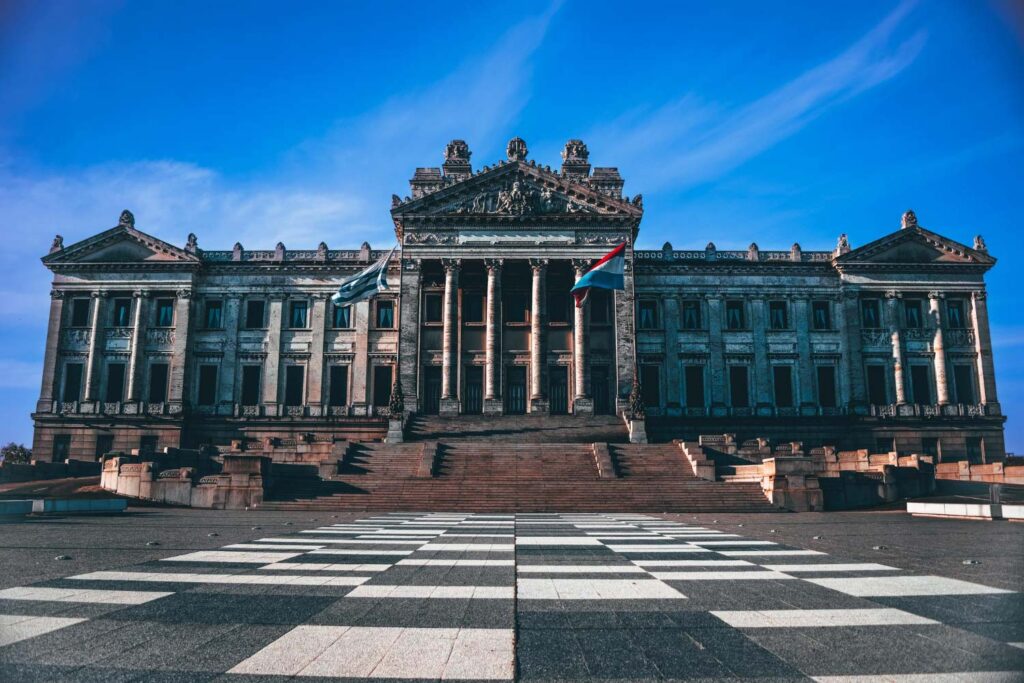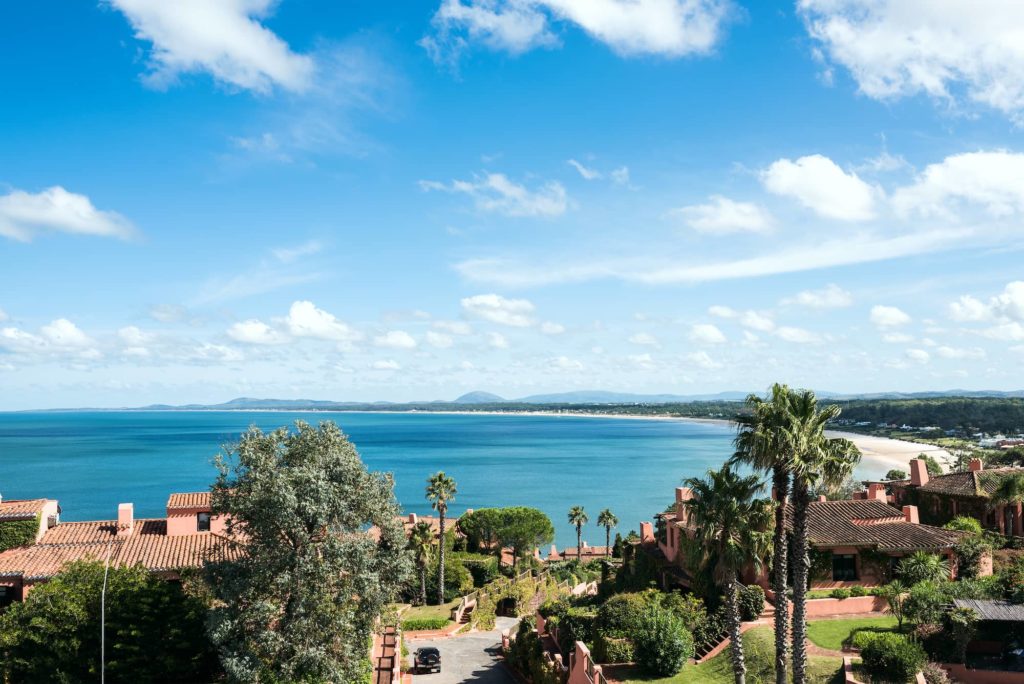Uruguay is a country full of historical and cultural landmarks that reflect its unique blend of indigenous and colonial heritage. Uruguay’s architecture tells the story of the revolution, settlement and industrial development that made the country what it is today. From grandiose palaces to humble churches, this article presents some of Uruguay’s most fascinating historic architectural landmarks.

1. Fortaleza de Santa Teresa (1762)
Fortaleza de Santa Teresa is located on the east coast of Uruguay in the department of Rocha and is an excellent example of an 18th century military fortress. It was built in 1762 by the Portuguese to defend their territory against a Spanish invasion. After Brazil’s independence, the fort became a symbol of freedom and sovereignty. The architecture of the fort consists of a star-shaped wall, typical of Portuguese military design. The fort also has a beautiful chapel, a museum and a breathtaking view of the ocean thanks to its height of about 800 MAMSL (2,600 feet).
2. Montevideo Metropolitan Cathedral (1804)
Montevideo’s Metropolitan Cathedral, built in 1804, is one of the city’s most impressive landmarks. Its architecture is neoclassical, a style that was very popular in the 18th and 19th centuries. The cathedral has a magnificent facade with two towers and a large dome that emphasizes its neoclassical features. The interior of the cathedral is equally impressive, with stained glass windows depicting scenes from the life of Jesus Christ. Visitors can also see the tomb of Uruguayan hero Jose Artigas.
3. Montevideo Cabildo (1804)
The Cabildo of Montevideo is an iconic building in the heart of Montevideo that served as a government building during the colonial period of the Viceroyalty of Río de la Plata. It was built in 1804 and the Cabildo’s architecture is a mix of neoclassical and colonial styles. The building has a large central courtyard surrounded by arcaded walkways. It also has a clock tower that is a popular meeting place for locals. Today, the Cabildo of Montevideo houses the city’s museum, where visitors can learn about Uruguay’s history and culture.
4. Palacio Taranco (1908)
Palacio Taranco is a stunning mansion from the 20th century that showcases the opulence of the Belle Époque era. It was designed by Charles Louis Girault and Jules León Chifflot and built by the Taranco family, who were one of the wealthiest families in Uruguay. The architecture of the palace is a mix of neoclassical, baroque, and art nouveau styles. The palace has a beautiful marble staircase, grand halls, and a lush garden that transports visitors to another era. From 1972 until today it houses the Museum of Decorative Arts.
5. Legislative Palace of Uruguay (1925)
The Legislative Palace of Uruguay in Montevideo was designed by the Italian architect Vittorio Meano. It was built between 1904 and 1925 and is considered one of the most impressive public buildings in South America. The architecture of the Legislative Palace of Uruguay is influenced by the Italian Renaissance style, with some elements of French and Spanish architecture. The facade is decorated with classical elements such as columns, arches and gables, and has a central tower with a dome. The tower is 80 meters high and is visible from different parts of the city.
The interior of the Legislative Palace of Uruguay is equally impressive, with a marble staircase, ornate ceilings and wood paneling. The building has several halls and chambers, including the Chamber of Deputies, the Senate and the General Assembly. These rooms are decorated with murals and sculptures and have high ceilings and large windows. The Legislative Palace of Uruguay is not only a symbol of the country’s political power, but also an architectural masterpiece that shows the beauty of classical architecture.
6. Palacio Salvo (1928)
The Palacio Salvo is one of Uruguay’s most famous landmarks and an excellent example of Art Deco architecture. It was designed by architect Mario Palanti and built between 1922-1928. The building was originally planned as a hotel, but eventually became an office building. The architecture of Palacio Salvo is a combination of Art Nouveau and Art Deco. The highlight of the building is the central tower, on top of which is a lighthouse. From the lighthouse visitors can enjoy a panoramic view of Montevideo.
The palace was built on the site where the Confiteria La Giralda once stood. It was here that Gerardo Matos Rodríguez wrote his famous tango La Cumparsita in 1917. Today, Palacio Salvo houses the Tango Museum of Montevideo, where the history of La Cumparsita and Uruguayan tango is shown.
7. Teatro Solís (1856)
Teatro Solís is an impressive theater that opened its doors in 1856. It was designed by the Italian architect Carlo Zucchi and was the first theater in Uruguay. The architecture of the theater is a mixture of neoclassical and eclectic styles. The interior is decorated with stunning frescoes, sculptures and paintings, making it one of the most beautiful theaters in South America. The theater is still in operation today and hosts various cultural events and performances.
8. Colonia del Sacramento Lighthouse (1857)
Located in Colonia del Sacramento, the lighthouse is one of the oldest landmarks in Uruguay. It was built in 1857 and has been guiding ships through the Rio de la Plata ever since. The architecture of the lighthouse is a combination of neoclassical and colonial styles. The lighthouse has a circular shape and a spiral staircase that leads to the top, where visitors can enjoy a breathtaking view of the city and the river.
9. Parroquia de la Sagrada Familia (1870)
The Church of the Holy Family is a beautiful church in Montevideo. It was built in 1870 and designed by the French architect Víctor Rabú. The architecture of the church is neo-Gothic, a style that was popular in the late 19th century. The church has an impressive facade with an imposing tower and a rose window that dominates the entrance. The interior is decorated with beautiful stained glass windows, sculptures and paintings, making it one of the most beautiful churches in Uruguay.
10. Club Uruguay (1888)
Club Uruguay is a historical club in Montevideo. It was founded in 1888 and is one of the oldest clubs in Uruguay. The architecture of the club is eclectic, a mixture of neo-Renaissance and Art Nouveau. The building has a beautiful facade with an ornate entrance that leads into a large hall. The hall is decorated with paintings, sculptures and chandeliers. Club Uruguay is still used today for various events and meetings.
11. Italian Hospital of Montevideo (1890)
The Italian Hospital of Montevideo is a beautiful hospital that opened in 1890. It was designed by architect Luis Andreoni and is a prime example of neoclassical architecture. The hospital has a stunning facade with beautiful Roman-style columns in precise geometric arrangement on two of the four sides of the building, emphasizing the concept of unity of art and science typical of late neoclassicism. The interior is equally impressive, with a lush garden, large halls and a chapel. The hospital is still in operation today, providing medical care to the citizens of Montevideo.
Eleven Architectural & Historical Landmarks in Uruguay
Uruguay’s historic monuments are a testament to the country’s rich history and cultural heritage. From military forts to impressive churches, each building has its own story to tell. Uruguay’s architecture is a mix of styles, reflecting the diverse influences that have shaped the country over the years.

